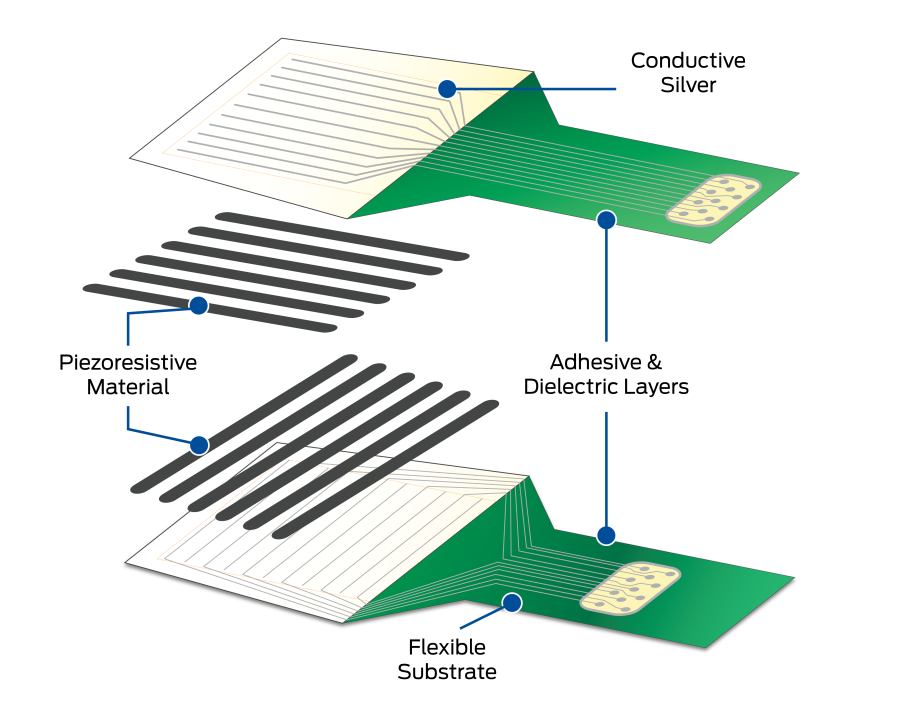How to Adjust the Pressure Range of a Tekscan Pressure Mapping Sensor
 Adjustable sensitivity (also known as adjustable gain) has been a standard in Tekscan pressure mapping systems for years; but what does it actually mean? To begin answering this question, let’s take a closer look into how Tekscan pressure mapping sensors work.
Adjustable sensitivity (also known as adjustable gain) has been a standard in Tekscan pressure mapping systems for years; but what does it actually mean? To begin answering this question, let’s take a closer look into how Tekscan pressure mapping sensors work.
Each pressure mapping sensor is constructed with rows and columns of pressure-sensitive material. Every intersection of pressure-sensitive material is a single, independent sensing point on the sensor that changes resistances as it is compressed. To measure this resistance change, Tekscan electronics send a drive voltage sequentially to all sensing points in the array. By increasing or decreasing the drive voltage, the peak pressure a sensor can measure is adjusted to the fit of the application.
Put simply, adjustable sensitivity allows the user to capture pressure ranges above or below the sensor’s default max range.
So, What is the Actual Range of a Sensor?
Because I-Scan software comes with 40 different sensitivity levels, each pressure mapping sensor has 40 different max ranges. This means that the same sensor can be used to capture a much wider range of pressures than their default max pressure setting indicates. For instance, the same sensor can have an accurate range of 3-31 psi when the sensitivity is high, or 11-110 psi when the sensitivity is low.
What Are the Benefits of Adjustable Sensitivity?
On-The-Fly Adjustments: It is not uncommon for a user to choose their sensor based on an average pressure range they anticipate for their application, but find that there are localized peak pressures that extend beyond those expectations. Rather than investing in a sensor with a different peak pressure, users can simply lower their sensitivity to a scale that can accommodate greater-than-anticipated peak pressures.
Versatility: There is no one-size-fits-all approach when it comes to testing pressure – and our sensors are made to reflect this. Higher pressures require a wider range, while lower pressures benefit from the precision of a smaller range. Adjustable sensitivity essentially bundles these capabilities all into one sensor for use in multiple applications.
Extended Life of a Sensor: Pressure mapping sensors will inherently change in sensitivity over repeated use. Using equilibration to help maintain sensor uniformity, adjustable sensitivity will ensure the changing sensor is providing a useful output for the application range.
Here’s How to Adjust Sensitivity
Check out this short video that shows just how easy it is to adjust sensitivity within I-Scan™ software
Any further questions? Contact our Pressure Mapping Applications Experts today.
Previous Post: | Next Post: |
